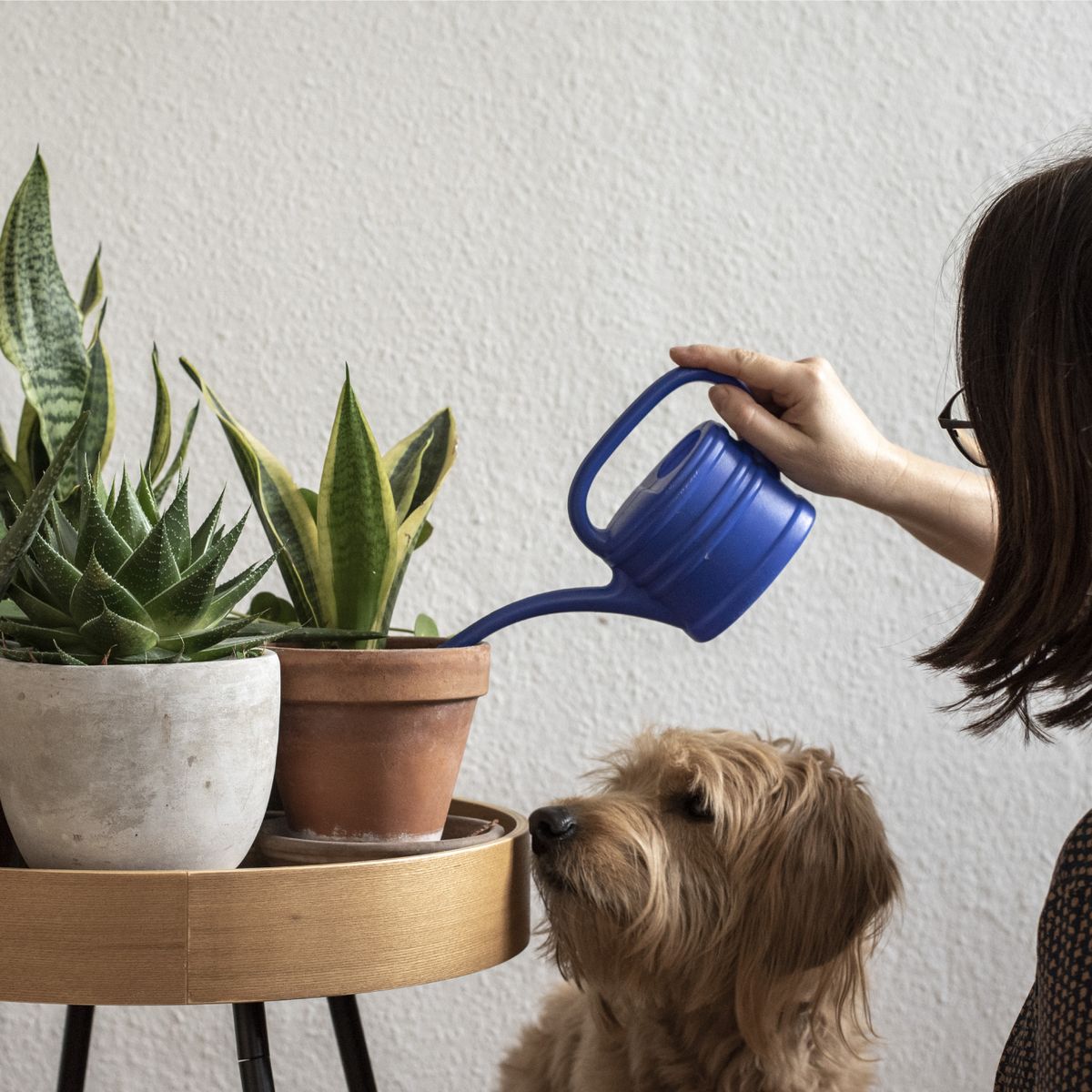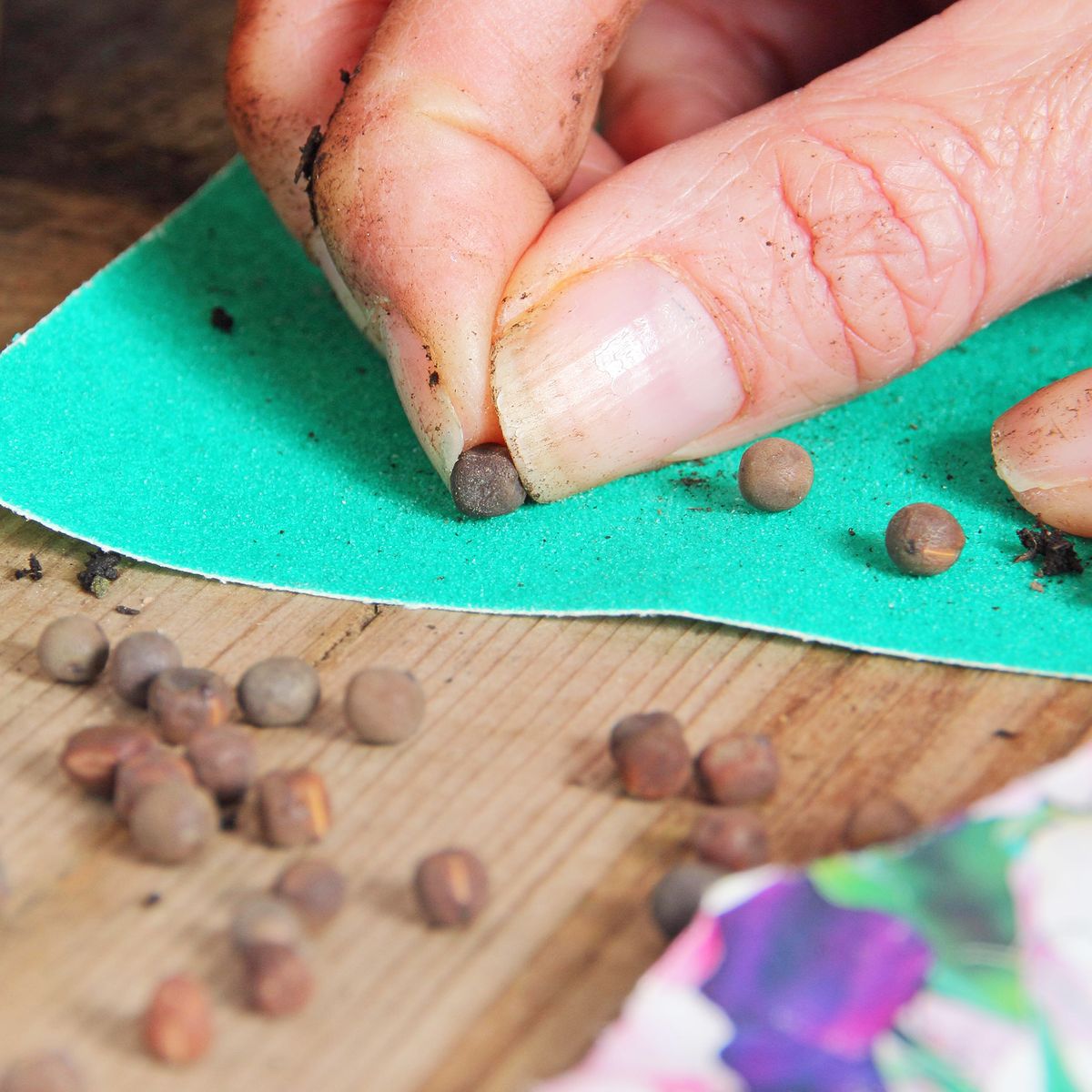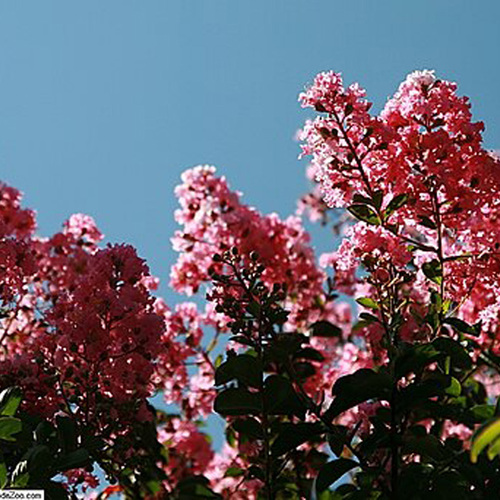In succulent Echeveria care, watering is often one of your most challenging tasks.
As with all succulents, overwatering a growing Echeveria can have disastrous results.
You’re much better off under watering an Echeveria than overwatering.
In this article, we review some of the most common mistakes people make when watering succulent plants and share advice to help you keep your Echeveria happy and healthy.
Start With The Right Plant Care Tools
If you’re serious about keeping Echeveria and other succulents, it’s a good idea to make sure you have what you need to water correctly.
When you bring your plant home from the nursery, be sure you also bring home these three items:
- A shallow, porous terra-cotta pot with ample drainage: a pot made of breathable material with a good drainage hole will help protect your plants against root rot.
- Proper cactus or succulent soil: Echeveria, and most succulents, need sharply draining soil made up in great part of large, coarse particles such as coarse sand.
If you’re going to make it yourself, a 50-50 combination of good quality potting mix and plain, sandbox sand will do.
- A good water can with a long, thin spout.
This type of device will allow you to target the soil surrounding the plant and avoid getting water on the delicate leaves.
Avoid These Common Watering Mistakes
Using a Poorly Designed Pot or Container
No matter how attractive it may be, do not plant your Echeveria directly in a glazed pot without drainage holes.
While it may be possible to keep your plant alive in this sort of pot, you’ll have to pay extraordinarily close attention to the amount and method of water provided.
If you love to see your Echeveria in a pretty glazed pot, be sure to get a terra-cotta pot with drainage, which will slip down inside of it handily and slip back out easily when it’s time to water.
Another potential container problem is sizing.
Echeveria does not like to have a lot of room for roots.
Choose a shallow container a little bit larger than the plant’s root ball.
If the plant has a lot of soil around it, it also has the potential to hold a lot of moisture around the roots, and this will result in root rot.
Potting Incorrectly
In addition to using the right kind of soil, you should also take care to pot your plant the right way.
Place a layer of gravel at the bottom of the pot to help provide good drainage.
Cover this with a good quality of sharply draining cactus or succulent soil mix or your sandy mixture.
When you transplant your Echeveria to its new pot, be sure to press the soil mixture down around the plant to hold it in place and to avoid leaving gaps and pockets where moisture might accumulate and cause root rot.
Allowing the Plant to Become Root-Bound
While Echeveria does not like to have a lot of excess space around its roots, it also does not like to be completely root-bound.
When the roots are overcrowded in the pot, they can become damaged and die.
Furthermore, when the plant outgrows its pot, it will use up all the nutrients in the soil, and this can kill it.
Plan to repot your Echeveria at least once every two years, but once a year is better.
Springtime is the best time for repotting.
Failure to Provide the Right Culture
It’s important to understand correctly watering your Echeveria is not just about water.
All of the elements around your plant add up to its culture and include aspects such as lighting, temperature, and air circulation.
The amount of time you allow to pass between waterings is dependent upon these conditions.
It’s important to remember the original Echeveria plants came from Central America and Mexico, where it is generally warm and sunny and not excessively wet.
Do your best to replicate the natural conditions helping to keep your plant healthy and happy.
Echeveria likes nice, consistent, bright sunlight even full sun, consistently warm temperatures ranging from 60° – 80° degrees Fahrenheit (15° – 27° C), and good air circulation.
The combination of these three conditions will help your plants make the most of the water you provide and avoid the development of mold and fungus.
Improper Water Techniques
When watering Echeveria, always be sure to soak the planting medium and avoid dampening the leaves completely.
Damp leaves provide a good environment for mold and fungus to grow, and these are the enemies of your plant!
For this reason, you must not use a spray bottle to water your Echeveria and other succulents.
Misting is not a good thing for these types of plants unless you are propagating using leaf cuttings.
In this case, lightly mist the Echeveria leaves and the surface of the soil they rest upon.
Do this daily until your Echeveria leaves sprout roots and begin to show new growth.
At this point, you would switch to deep, occasional watering.
What Are The Correct Echeveria Water Requirements and Techniques?
For your indoor Echeveria elegans and other types of Echeveria succulents, you have two choices.
Either pour water through the soil until it runs out through the drainage hole in the bottom of the pot, or water from below by setting the pot into a dish of water so water can come into the drainage hole and through the porous terra-cotta surface.
For the top watering technique, use your watering can with a very narrow spout to pour the water slowly and carefully directly onto the soil.
Take great care to avoid getting water on the rosette.
If drops of water do get on the leaves, use a paper towel to soak the water up.
If you use the bottom watering technique, you must be sure not to leave your plants sitting in water for an extended period.
Leave it for about fifteen minutes or until the surface of the soil is wet.
Once your succulents are watered, make sure to let the soil dry. Do not water it again until the soil is almost completely dry.
This type of watering is called the soak-and-dry method, and it works well for all succulents and cactus because it replicates the natural setting from which the original Echeveria plant came.
In their South American and Mexican homelands, these plants are used to periods of heavy rain followed by drought.
This is what they are adapted to, and these conditions will encourage them to develop strong, healthy roots and avoid problems such as root rot and leaf rot.
How Can You Tell If You Are Not Watering Correctly?
Whether you are overwatering or under watering, you may notice your plant begins to drop its leaves, shrivel up, wilt, and become weak.
If you notice these signs and symptoms, examine the plant closely for signs of rot, such as a dark circle of mushy flesh along the base of the plant or dark, soft leaves.
If you find dark, rotted areas in your plant, you know you are overwatering.
You may need to repot your plant into fresh potting soil.
Take care to cut off all rotted areas before moving the plant to fresh soil.
Allow the plant to lie out in the open air for a day or two to dry out a bit before placing it in the new potting mix.
How Often To Water Echeveria Succulents?
The frequency of watering echeveria depends a lot on your setting.
If you live in a very humid area, you will water less frequently.
If you live in a very dry area or if you have central heating keeping your ambient humidity low, you’ll water more frequently.
Generally speaking, count on watering once every week to ten days; however, small variables such as pot size and plant size may influence this schedule.
It’s best to simply check your soil every few days and water when it is nearly completely dry.
Tips For Echeveria Care Planted in Landscapes?
Follow the same concept when planting Echeveria directly in the ground.
If you live in a very hot, dry place, you will naturally need to water a little bit more often if you live in a cool, humid place you may water very seldom or even not at all.
Check the soil frequently, and when it becomes quite dry, you’ll know it’s time to give your succulents a thorough watering.
For an Echeveria planted in a garden landscape, use a soaker hose.
Alternately, water by simply laying the water hose down near the plant and allowing water to trickle directly onto the ground until the soil is thoroughly soaked.
Generally speaking, Echeveria planted directly in the ground will not need to be watered as often as those kept in pots.
For Echeveria kept in containers outdoors, you’ll probably need to water more often than you do potted plants kept indoors.
Again, simply check the soil frequently and when it is very nearly dry, water deeply and thoroughly.











